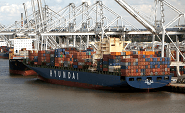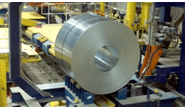Trade Cases

Leibowitz: The blowback from Trump's 'Liberation Day' tariffs has only just begun
Written by Lewis Leibowitz
April 5, 2025
The new global economic order took clearer shape last Wednesday, when President Trump issued Executive Order 14257. The all-important annexes to the order were not released until Friday. Now we can finally dive into the details.
The outlines of the decision are widely known. A “baseline” tariff of 10% is imposed, by presidential fiat, on all imports from everywhere. Certain countries are hit with higher than 10% tariffs, including such predatory actors such as Lesotho (50%) and Cambodia (49%). An uninhabited island in the Antarctic was hit with 10% tariffs, although they don’t appear to make anything. Remarkably, three countries – Russia, Belarus, and North Korea – were not mentioned at all.
Canada and Mexico are treated specially under the new tariffs. For the moment, the tariffs do not apply, at least as of this reading. But the 25% tariffs imposed last month on imports from Canada and Mexico remain in effect.
Products subject to the steel and aluminum tariffs (25%) are exempt from the new tariffs. So, steel and aluminum will remain subject to those tariffs, plus additional tariffs on China, and the vast array of antidumping and countervailing duties that have hit steel trade for decades. How much protection is too much?
Another exemption in the annexes covers goods that were loaded for delivery to the United States on or before 12:01 AM on April 5. The tariffs on countries hit by the executive order at a rate higher than 10% will take effect on Wednesday, April 9 at 12:01 AM. There are numerous exemptions to the tariffs, which require consulting with Annex II and Note 2(v)(iii) of the Annex.
This action is, as many have said, legally extremely dubious. First, the president seems to believe he has the authority to replace the income tax with tariffs as a major means to provide revenue for the federal government. That is likely a “major question.”
The Supreme Court has held that “major questions” must be “clearly” authorized by Congress. “Congress,” Justice Antonin Scalia has written, “does not hide elephants in mouseholes.” Yet Congress has authorized the Executive Branch to impose tariffs in several statutes. But it has not done so when it comes to invoking the International Emergency Economic Powers Act (IEEPA).
The authority the president invoked leans heavily on his declaration of a “national emergency” over trade deficits under IEEPA. Time and space don’t permit a thorough discussion of the arguments for and against the use of this statute (IEEPA) to impose tariffs. There will surely be numerous legal challenges to the tariffs from many quarters. There has already been a case filed in Florida to challenge February’s 20% tariffs on imports from China (Emily Ley Paper v. Trump). In short, the president’s tariffs are on shaky grounds.
One clear example of how shaky the ground may be occurred last week. The president issued an order expanding the Section 232 “aluminum derivative” articles by two items: empty aluminum cans and beer. Is beer a “derivative” of aluminum? As Politico reported, it appears that the 25% tariffs apply to beer regardless of the container—kegs, bottles, or cans. The brewing industry should soon be chug-a-lugging into court on that one.
The stock market was neither comforted nor amused by the president’s moves last week—that’s for sure. All the exchange averages crashed. It will take a long time for the market to recover, and these tariffs will need to be slashed for it to happen.
It took 25 years for the Dow Jones Industrial Average to return to the pre-crash level of October 1929. The Dow lost more than 1,500 points for two consecutive days last week—the first time that has ever happened. Investors stampeded to the safety of bonds. Bond prices went up, and rates went down. The value of the dollar sank steadily after the announcement.
President Trump says that this is a temporary setback, and the economy will roar back to life. Almost no one believes that.
So far, China has announced retaliation, and it is large—34 % on most products imported from the US. Countries other than China, including the closest allies of the US, are taking a more cautious approach. But there is anger and fear among them. Expect more retaliation against US exports and a further depreciation of the dollar.
Which brings me to the inflationary impact of these tariffs. They will drive up prices of both imports and domestic products. They always do. Tariffs are taxes that the government collects. Funds are disbursed by acts of Congress. If domestic companies, including manufacturers, are to benefit from “protective” tariffs, they must raise their prices as well. Maybe not by the entire amount of the tariffs, but by some. Inflation will come.
Other manufacturers will, as they must, continue to rely on more expensive imports of intermediate goods—like engines, fasteners, yarn, and components for machinery. Their costs will rise, because there are simply no suppliers (or inadequate supplies) of products they need to stay in business.
No exceptions means that they will lose competitiveness and eventually lay off workers. Those expectations, which are entirely rational, will continue to assault stock prices. The available evidence indicates (1) that manufacturing in America is much healthier than the president’s executive order claims and (2) that manufacturing employment will not rise with tariffs.
President Trump has blamed other countries for treating the US as a patsy. There is, no doubt, a grain of truth to that argument. But it won’t work to sustain this policy because the solution to massive trade deficits is not, as I’ve said before, protective tariffs. It is fiscal discipline. Blaming foreigners is an old political trick. It will be no more successful this time than any other time.
Editor’s note
This is an opinion column. The views in this article are those of an experienced trade attorney on issues of relevance to the current steel market. They do not necessarily reflect those of SMU. We welcome you to share your thoughts as well at info@steelmarketupdate.com.

Lewis Leibowitz
Read more from Lewis LeibowitzLatest in Trade Cases

Supply chains, end-users brace for impact from tariffs
Supply chains are working through what the tariffs mean for them

Commerce releases prelim anti-dumping duties in sweeping trade case targeting CORE imports
The US Commerce Department on Friday released preliminary anti-dumping margins in a trade case targeted imports of coated flat-rolled steel from 10 countries. Certain countries and mills were hammered while others were largely spared. Brazilian steelmaker CSN, for example, received a preliminary rate of 137.76%. Some Turkish mills – including Boreclik and ArcelorMittal Celik Ticaret – received no dumping margin at all.

CRU: Trump’s sweeping tariffs could derail the US met coal industry
Latest tariffs could lead to US metallurgical coal exporters (many already high-cost swing producers) being priced out of the market.

Tariff fallout: Canada strikes back, Stellantis idles, GM boosts production
Canada imposes auto tariffs, while automaker Stellantis temporarily idles some plants.
